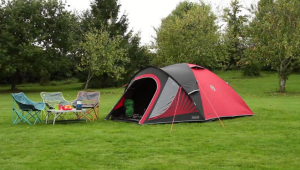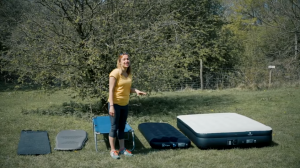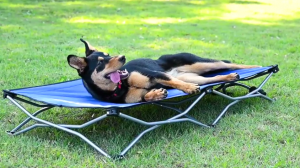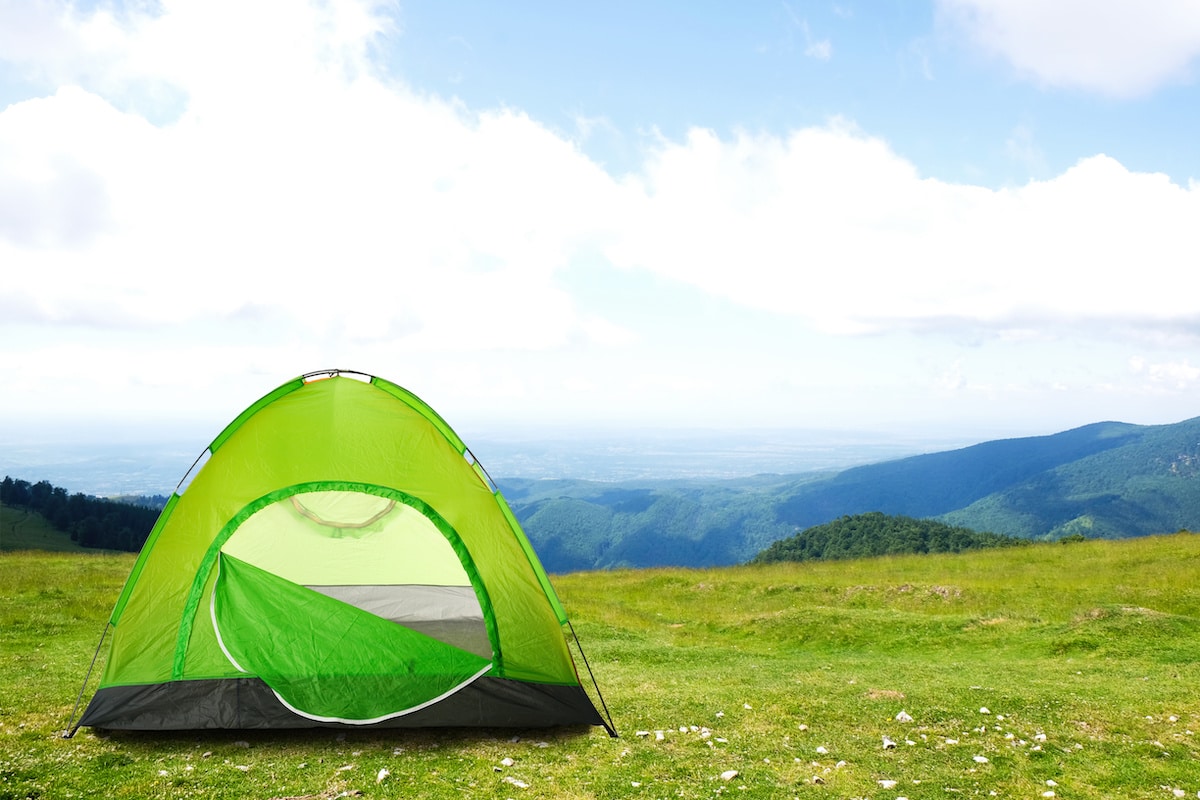You don't necessarily need to limit yourself from going camping when the weather is not as perfect as you wish. With the right camping gear and applying some of these great tips, you'll be able to enjoy your outdoor adventure whether is during a cold or hot season. Let's get into it!
What We'll Cover
- How To Insulate a Tent Wall
- Choose a Good Spot for Your Tent First
- Reflecting Foil
- Bubble Wrap
- Rain Fly
- Tarps
- Foam
- Blankets
- Boughs, Branches, and Leaves
- How To Insulate a Tent Floor
- How To Insulate a Tent For Winter Camping
- How Do I Keep My Tent Warm in Winter Camping?
- How Can You Safely Heat a Tent?
- What Type of Tent is Good For Cold Weather?
- How Do You Insulate a Tent for Summer?
- How to Insulate a Tent for AC
- The Best Tents for AC Camping
How To Insulate a Tent Wall
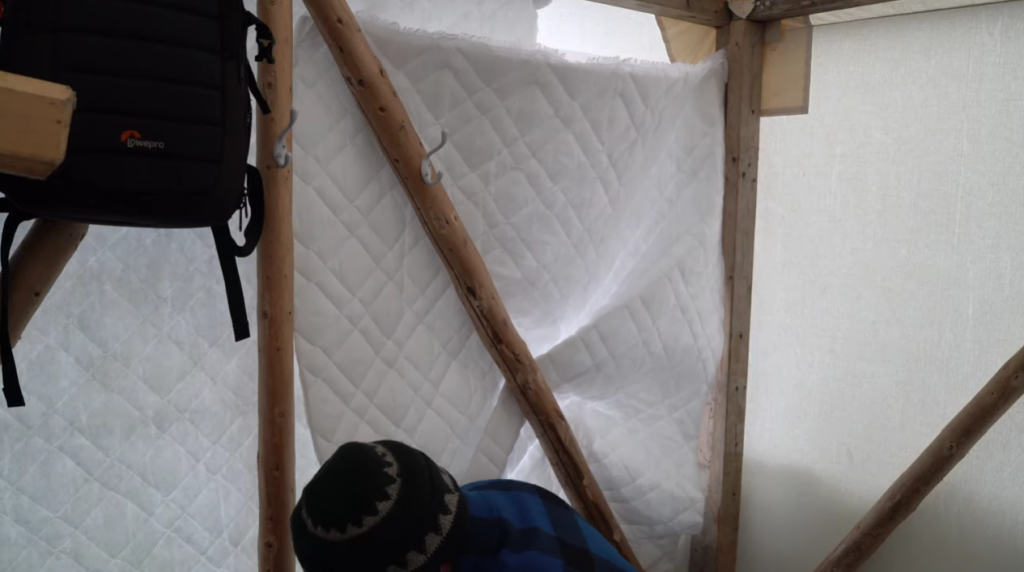
Choose a Good Spot for Your Tent First
One of the best things you can do for insulation is to choose a wise location. We will cover the specifics for the best spots depending on whether you're camping in the summer or winter in more depth below.
Reflecting Foil
Whether it's a reflective blanket, reflective air bubble foil, a reflective tarp, or a roll of reflective foam, reflective material does a fantastic job of insulating the wall of the tent. The reflective side bounces heat and light away from the material. In the wintertime, you should point the reflective side inwards, and during the summer it should point outwards.
Bubble Wrap
Bubble wrap is a great way to create an air pocket, thus creating an insulating layer, without a lot of effort or money needed. Layer it on the outside of your tent, because it is not breathable, and it may act as a makeshift rain fly since it's plastic.
Bubble wrap is surprisingly effective, but it's heavy and bulky. While both of these properties make it a good insulator, they do not make it practical to carry, especially for long backpacking trips. If you plan to camp near your vehicle, though, go for it! You can even layer some of it under your tent to cushion where you sleep.
Rain Fly
A rain fly is a protective barrier that is intended to attach to the top of your tent. Usually, it is sold with the tent.
There are two primary types of rainfly: waterproof, and mesh. Mesh is used to aid the air's circulation, keep bugs out, and see out of the tent. Hey, many of us go camping for the scenery, so we don't want to miss out on the views, even when we're tucked away in our tents for the night.
For insulation, you want the waterproof type. Not only does it shield you and your tent from moisture, but it also traps in some of the air and slows down circulation, making it easier for you to warm up.
Another benefit of having a rain fly is that it does add some layer of protection to you and your tent. Pollen, leaves, bugs, insect urine, bird droppings, water, dust, and sand are all kept outside by the rain fly too.
Tarps
Tarps serve a similar purpose as a rainfly, but they do serve slightly different functions. Here are some notable differences.
- Tarps are sometimes used to replace tents in moderate weather. A rainfly cannot do this.
- Tarps are available in several different sizes, shapes, materials (usually canvas, mesh, nylon, silnylon, polyethylene), durability levels, and colors. You can set up a tarp any way you would like, you cannot create or cover a shelter in many different ways with a rainfly.
- Tarps are generally bulkier and heavier than rain flys. This makes them a little more cumbersome to pack, but also a better insulator. They are also more durable.
Foam
Foam is a bit tricky to apply to your tent and is cumbersome to carry for a long time, but it is one of the most insulating materials on our list. Either save this one for trips where you're camping close to your vehicle, or on those cold backcountry trips when you have a pack horse or pack mule to accompany you.
You can use foam on the inside or outside, on the walls, or on the floor of your tent. If you want it on the sides of your tent, try duct-taping it in place, or lean it on the sides and then cover the foam with another layer of protection. I have used foam in between my rain fly or tarp and the tent itself for an added layer of protection and insulation.
If you have one long roll of foam, make sure it is naturally curving around and hugging your tent, otherwise, it's going to be a big fight getting it to stay in place.
Many people use foam underneath their sleeping bags to make a mini mattress for warmth and comfort too.
Blankets
If all else fails, use a blanket as insulation. Most people have several extras, so they shouldn't cost anything to use. I suggest attaching the blanket on the interior of your tent so it isn't absorbing any extra water from the outside, while still soaking up a little condensation on the inside.
Boughs, Branches, and Leaves
While it may seem minuscule to add boughs, branches, or piles of leaves to the side of your tent, it is surprisingly effective. My preferred method is to layer on evergreen boughs, with the pointy stick side up, until you can no longer see your tent. Boughs are less likely to blow away, they hold well, add a layer of waterproof protection, and hold in a lot of heat. Just be careful not to puncture the tent walls because they can be deceptively sharp.
Leaves will work, but can blow around. You'll want to make sure that the leaves are dry too; otherwise, you're setting yourself up to be wet, moldy, and very smelly.
How To Insulate a Tent Floor
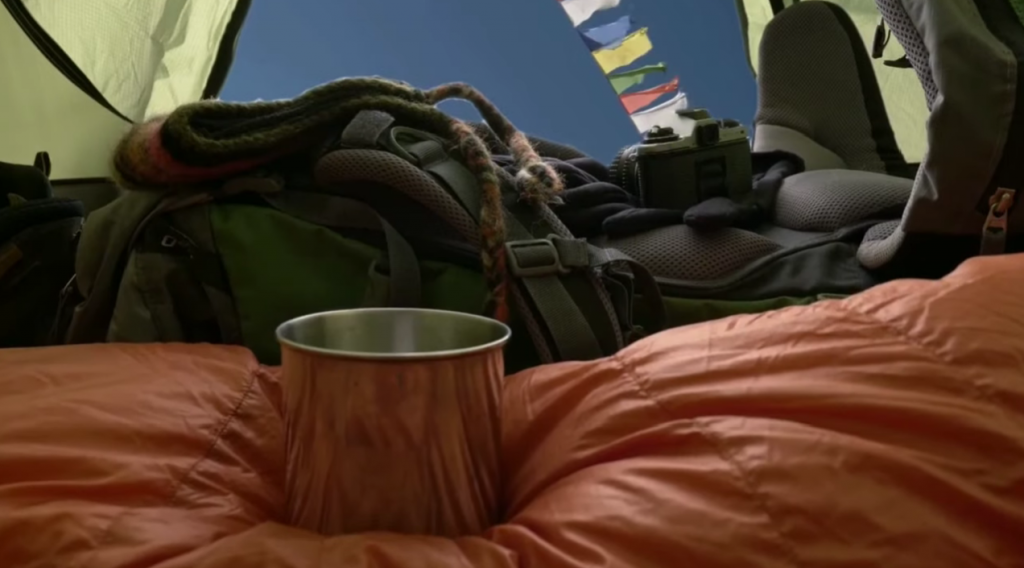
To insulate the floor of a tent, add thick materials that do not conduct temperatures well underneath or inside the tent, or add a layer of (still) air below you.
If you are camping in snow, clear the ground of snow first. If you don't, you'll either find yourself in a puddle or sleeping on top of a slick, uncomfortable block of ice once it melts and refreezes.
You should also get rid of excess rocks, leaves, sticks, and humps of soil. They make your floor bumpy, and may make it possible for air to flow underneath the tent. Airflow is almost the opposite of insulation, and you really don't want it if you are camping in the winter, or camping in the summer with AC.
Tarps
Tarps make the floor of your tent waterproof, or at least water resistant, and has a few insulating properties.
For dry winter days, allow the tarp to extend past the perimeter of the tent. It can 'collect' some of the warmth from the sun and let it radiate up through the floor of the tent.
For wet days, and especially summer days, tuck the tarp underneath the tent so it doesn't stick out. This well prevent water from pooling, and it will prevent the transfer of excess heat into the tent.
A Dry, Even Bed of Leaves
Before putting your tent up, consider raking a pile of leaves to the area where your tent will go. Smooth them out, and make the pile as uniform and level as possible. The goal is to add a warm base layer that will hold still air, and not allow any airflow underneath your tent.
Leaves are also pretty comfortable to lay on, and will give you a surprisingly pleasant night of sleep.
How To Insulate a Tent For Winter Camping
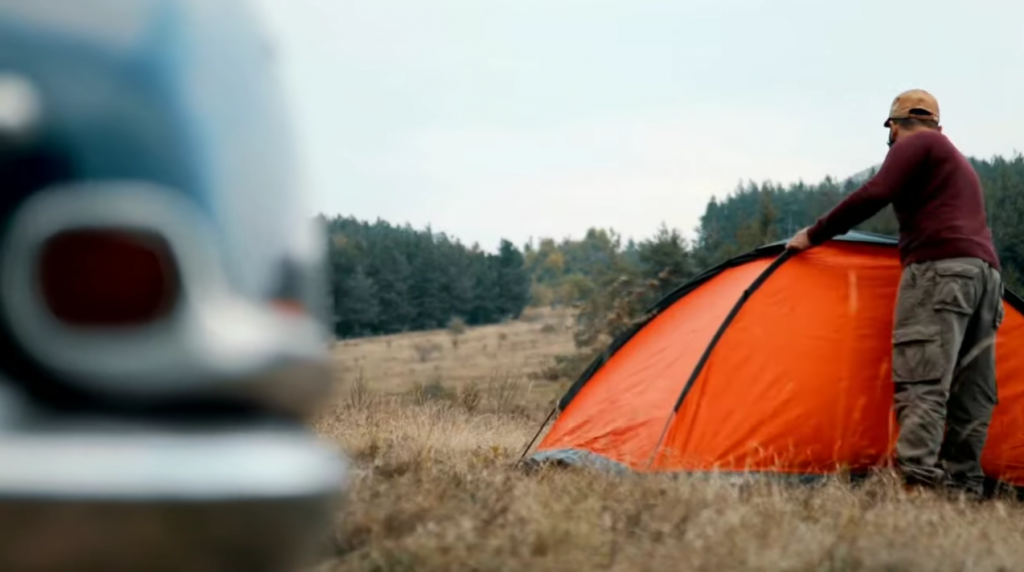
If you are serious about winter camping, it's a good idea to invest in a four-season tent that is intended to withstand cold winterly nights. Still, four-season tents are more expensive and can be difficult to find at times.
If you don't have a four-season tent, winter camping is still possible, you'll just need to pack and prepare a little more for your trip. The following tips can be used for two or three-season tents in colder weather or used with a four-season tent for more extreme winter conditions.
Pitch Your Tent in a Smart Location
Putting your tent up on the opposite side of a large tree, boulder, hillside, or even your vehicle to protect it from prevailing winds will do a lot in terms of insulation. If you're camping with a group, let the others set up first, then you set up behind them for that sweet wind protection (share your snacks if you do this, or else they may not invite you out again).
How Do I Keep My Tent Warm in Winter Camping?
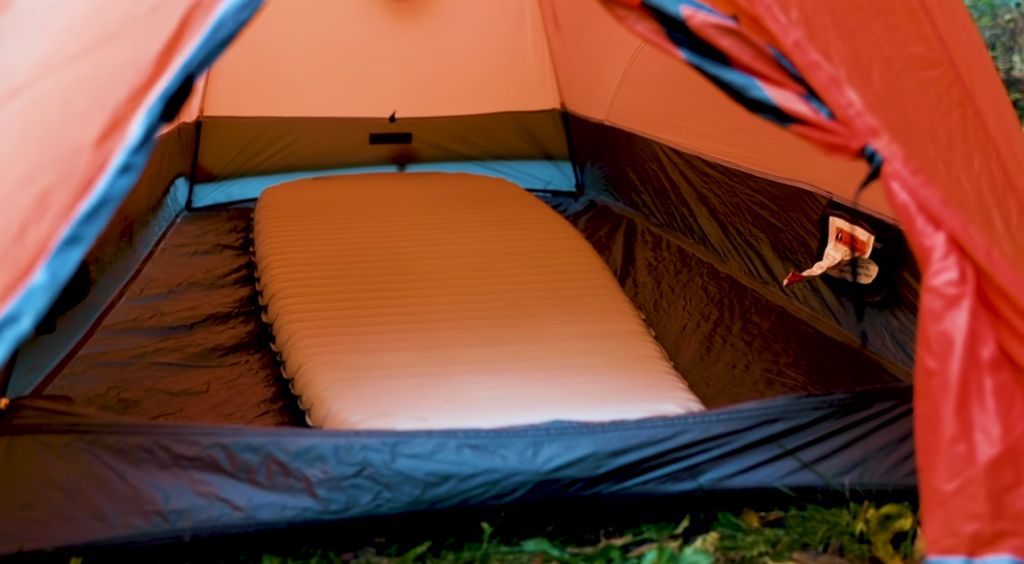
- Use Wind Blocks. Pitch your tent next to an object that will block some of the wind, or use something like a tarp to make an artificial windbreak.
- Insulate the Floor, Wall, and Ceiling of the Tent. We have helpful tips for that above.
- Bring a Heat Source. Most of the time your body heat is enough, but you can also use space heaters, candles, or even a wood stove for added warmth. Always do your due diligence before using any added heat sources so you stay safe. Not only is fire a threat, but so is carbon monoxide poisoning.
- Use a smaller tent or bring another person. Smaller tents don't need nearly as much heat to hold a higher temperature. Of course, bringing a friend or loved one along doubles your body heat produced in the space, making the tent warmer.
- Bring another tent! This is not always practical, but sometimes pitching your winter tent inside another water-proof tent that is slightly larger works really well. The air pocket is large, and adds a significant layer of insulation from the cold. Plus, it's nice to have a small "porch" when you go camping.
How Can You Safely Heat a Tent?

No method of heating a tent is perfect or completely safe, so use caution and research any method you're considering very carefully. Fire is a risk, but so is carbon monoxide poisoning. Start with good tent insulation, and then add your heat source so warmth is not lost.
Hot Water Method
Bring your kettle of water to a boil over the campfire, and then add that to a container that you'll bring inside your tent. I prefer to use a five-gallon bucket with a lid (because I'm clumsy), and to dilute that hot water with cooler water. It's possible to melt the floor of your tent if you aren't careful. It's also possible to melt the bucket if you're using plastic, which makes a dangerous mess very quickly. You can also use rinsed-out gallon milk jugs or two-liter bottles for this. After a few hours, you can grab these smaller containers and bring them into your sleeping bag with you. Try putting one next to your back, one at your feet, and another by your chest so you can hug it. Best sleep ever!
This is my personal favorite way to heat the tent up.
Electric Blankets
Modern electric blankets are much safer than older versions, which is why they are a good, relatively safe alternative for warming you and your tent.
You will need a source of electricity for this to work, but it is a nice solution for designated electric campsites. Never fall asleep with the electric blanket inside your sleeping bag. If you want to sleep with the blanket, make sure you unzip the sleeping bag and use it more like a comforter.
What Type of Tent is Good For Cold Weather?

Four Season Tents
Four-season tents are intended for all-year use, meaning that they are well insulated and rated for colder weather.
Here is an excellent four-season insulated tent that is waterproof, intended for ultralight backpacking, and suits up to two people.

【Backpack Tent for 2 Person】GEERTOP backpacking tent is spacious enough to accommodate up to two people, perfect for couples or single person backpack outdoor travel; Inner tent with the dimension ...
Small Tents
Smaller tents are naturally easier to heat and retain warmth. If you have two people sharing a tent, go for a two-person tent, rather than a four-person. Not only is it more economical, but it's much cozier. Believe me, it's worth it to sacrifice space rather than shiver all night.
Camping solo? Check out this lightweight, water-proof one-person tent.

[Professional 1 Person Tent]: Size: Inner tent(L8.2ft x W2.95ft x H2.95ft), Outer tent: L8.2ft x W(2.95ft +1.31ft) x H3.11ft, 3500~4000mm Water Resistance. Fire Retardant Standard/CPAI-84. This 1 p...
Long-Term Wall Tents
If you intend on staying in your tent for a while, consider using a wall tent. Wall tents allow you to use a full woodstove for heat, and many people opt to build decks for them to sit upon. Wall tents are often associated with outfitter camps or glamping experiences, but they can be lived in full time too.
These are the most expensive types of tents, but they can fit an entire family comfortably, some can be set up for twenty years, and they are by far the most logical option for long-term stays.
These wall tents range from 8 by 10 feet all the way to 16 by 24 feet.

STANDARD FEATURES: Canvas Alpha Wall Tent includes the complete tent with aluminum frame, rafter angle kits and free-floating PVC floor, NO NEED TO BUY THEM SEPARATELY! Basic features include the s...
How Do You Insulate a Tent for Summer?

How To Keep Your Tent Cool
The best ways to keep your tent cool without an AC unit are:
- Set up in a shaded area. By a large rock, under a shade tree, or in a valley where the air is naturally cooler. You can also add artificial shade via a mesh rain fly or appropriate tarp. You can also plan your trip according to the weather and predicted wind speed.
- Allow for lots of good air circulation. Windier areas, such as hilltops, riversides, or in a breezy open space is ideal for optimal airflow.
- Take your tent down during the heat of the day. Get it out of direct sunlight, this will limit UV exposure which cools the material down, and prolongs the life of the tent.
- Use reflective sunshades to cover the tent during the hottest part of the day.
- Bring packs of frozen water. Again, I like clean one-gallon milk jugs and two-liter bottles, but you can use whatever you like. A five-gallon bucket filled with water is more difficult to freeze, but should last a while and do a lot to cool off the inside of the tent.
- Camping near a fast-moving stream will provide you with a consistent flow of cool air, but be warned, with rivers, comes the occasional pool of stagnant water. And where there's stagnant water, there are billions (okay, maybe "just" millions) of mosquitoes.
Can I Use an Air Conditioner in a Tent?

You can use an air conditioner in your tent if you are using a campsite with an electric meter, a generator, or some other source of portable electricity.
Air conditioners use a lot of energy, so be prepared for that.
Portable AC Units
Portable AC units are the best option because they take the humidity and condensation from your tent while cooling it. It also doesn't require an AC port, or an AC stand. The downside to this type is how much space they use inside the tent. I recommend sizing up one person more for your tent if you intend to regularly use a portable AC. So if you and a friend will be sharing a space with a portable unit, bring a three-person tent.
Window AC Units
This option will make your tent cold enough you'll want a blanket despite scorching three-digit temperatures. These units also sit outside of the tent, meaning you have more space left for you inside the tent. Unfortunately, though, these are huge power drains, they are difficult to set up, need an AC port, need an AC stand, need an external power supply, they are very heavy, and yet are relatively easy to steal since they sit outside the tent.
Evaporative Coolers
These machines work via a cooling water tank. It adds humidity and cool air to your tent, making it ideal for desert climates, but a nightmare for tropical regions. It is usually lightweight, portable, and pretty small, so it won't take up much space in your tent. It is the most energy-efficient option of all three, but the drawback here is that it is the least powerful option, it will take longer to make a noticeably cooler space. However, it is the cheapest option, and is the best option for being off-grid, since it doesn't drain energy quickly.
How to Insulate a Tent for AC
Block out as much sunshine as you can from the tent. Go for a shady area, and bring a tent that is small (so there's less of it to cool off) and well-insulated (so it holds the cool air for longer).
If your tent isn't already well insulated, use nearly the same tips for camping in cold weather.
- Don't allow airflow through or beneath the tent, circulation lets the AC air escape the tent.
- Add insulation to the sides, floor, and ceiling of the tent. Use a rainfly, tarp, foam, bubble wrap, old quilts, blankets, or a reflective blanket. For the reflective blanket, (or any other reflective item you may have) make sure that the reflective side is pointing outward, to bounce the heat of the sunshine away from the tent. You can also toss leaves, boughs, and branches on the tent for added insulation.
The Best Tents for AC Camping
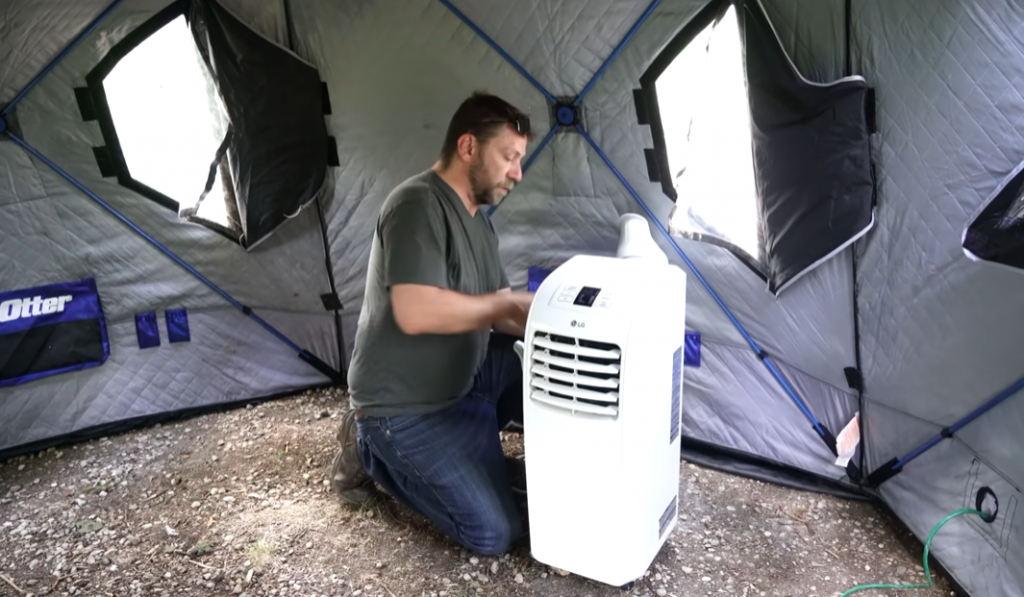
For Portable AC Unit Tent Camping
This three-person insulated tent has a reflective finish on the outside sets up in one minute and is perfect for two people who intend on bringing a portable AC unit with them.

[Versatile Insulated Inner Tent] The Crua Culla Maxx is ONLY to be used as an Inner Tent. Our Culla Series can be used inside of any Tent it will fit into. It can also be used as a boat tent, insid...
Camping with a Crew / Tent with Air Conditioner Slot
Whether you're bringing five, eight, or eleven friends with you, this heat-shield and waterproof technology tent is perfect for your next outing. It features light insulation and two AC ground vents that are all ready for your unit. It comes with a rainfly and sets up in less than a minute.

INSTANT 60 SECOND SETUP TECHNOLOGY: Poles come pre-attached to the tent for quick assembly - unfold and extend leg poles until they click into position.
HEAT SHIELD TECHNOLOGY: Features a special r...

True 8x8 weave 5 mil thick waterproof tarp
Lighweight washable and mildew proof with rope in hem
Woven and laminated polyethlene with heat sealed seams
Supplied with built in grommets every 36" to ...
The responses below are not provided, commissioned, reviewed, approved, or otherwise endorsed by any financial entity or advertiser. It is not the advertiser’s responsibility to ensure all posts and/or questions are answered.
![How to Insulate Your Tent For Winter & Summer Camping [Easy & Safe]](/assets/images/a0d8d705f3ad673d47337f689d5f279c.png)

